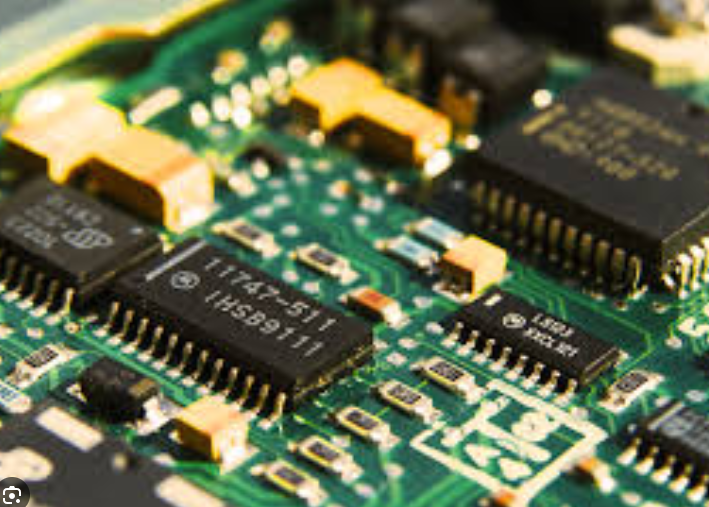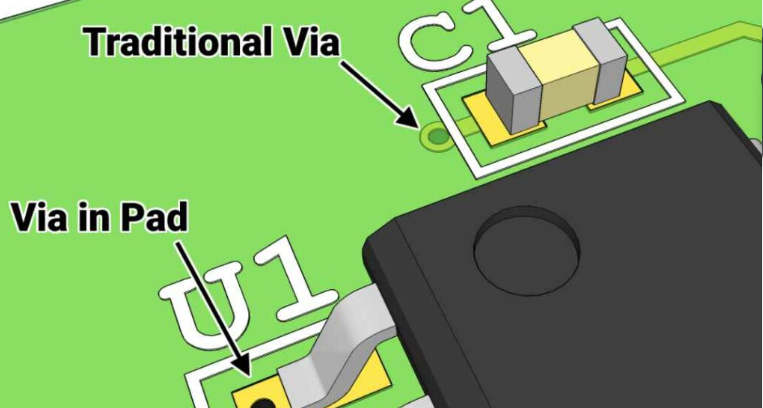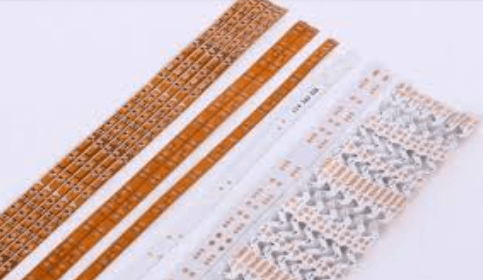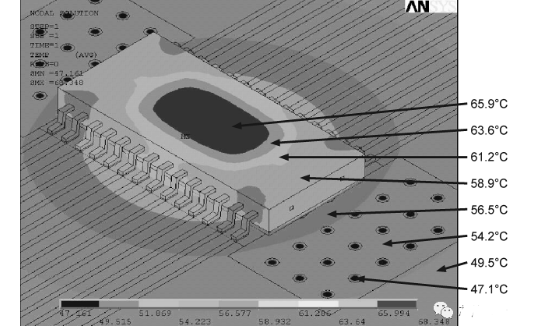Vias on flex pcb
Understanding The Role Of Vias on Flex PCB Design
In the realm of modern electronics, the design and implementation of flexible printed circuit boards (flex PCBs) have become increasingly prevalent. These versatile circuits offer numerous advantages, including reduced weight, enhanced durability, and the ability to conform to complex geometries.
A critical aspect of flex PCB design is the incorporation of vias, which play a pivotal role in ensuring the functionality and reliability of these circuits. Understanding the role of vias in flex PCB design is essential for engineers and designers aiming to optimize their electronic products.
Vias, essentially small holes drilled into the PCB, serve as electrical conduits that connect different layers of the circuit.
In flex PCBs, vias are particularly significant due to the unique mechanical and electrical challenges posed by the flexible substrate. Unlike rigid PCBs, flex PCBs must maintain electrical integrity while being bent, twisted, or folded. Consequently, the design and placement of vias require meticulous consideration to prevent mechanical stress and potential failure.
One of the primary functions of vias in flex PCBs is to facilitate interlayer connectivity.
Flex PCBs often consist of multiple layers, each serving distinct purposes such as signal transmission, power distribution, and grounding. Vias enable the seamless transfer of electrical signals between these layers, ensuring that the circuit operates as intended. For instance, a signal originating from a component on the top layer can be routed through a via to reach a corresponding component on the bottom layer, thereby maintaining the circuit’s continuity.
Moreover, vias in flex PCBs contribute to the overall miniaturization of electronic devices.
As consumer demand for smaller, more compact gadgets continues to rise, the ability to design intricate circuits within limited space becomes paramount. Vias allow designers to maximize the use of available real estate by enabling vertical interconnections, thereby reducing the need for extensive horizontal routing. This not only conserves space but also enhances the performance of the circuit by minimizing signal path lengths and associated losses.
However, the implementation of vias in flex PCBs is not without its challenges.
The flexible nature of the substrate introduces mechanical stresses that can compromise the integrity of the vias. To mitigate this, designers often employ techniques such as staggered via placement and the use of teardrop pads. Staggered vias distribute mechanical stress more evenly across the substrate, reducing the likelihood of via failure. Teardrop pads, on the other hand, provide additional support at the via-pad interface, enhancing the mechanical robustness of the connection.
Furthermore, the choice of via type is crucial in flex PCB design.
There are several types of vias, including through-hole vias, blind vias, and buried vias, each with its own set of advantages and limitations. Through-hole vias, which extend through the entire thickness of the PCB, are commonly used due to their simplicity and reliability. Blind vias, which connect an outer layer to an inner layer without passing through the entire board, and buried vias, which connect inner layers without reaching the outer surfaces, offer additional design flexibility but require more complex manufacturing processes.
In conclusion, vias are indispensable components in flex PCB design, enabling interlayer connectivity, contributing to miniaturization, and ensuring the mechanical and electrical integrity of the circuit. By carefully considering the placement, type, and support mechanisms for vias, designers can optimize the performance and reliability of flex PCBs, thereby meeting the ever-evolving demands of modern electronic applications.

Best Practices For Placing Vias On Flexible PCBs
When designing flexible printed circuit boards (PCBs), the placement of vias is a critical aspect that can significantly impact the performance and reliability of the final product. Vias, which are conductive pathways that connect different layers of a PCB, play a crucial role in ensuring electrical continuity and signal integrity. However, the unique properties of flexible PCBs necessitate a careful and strategic approach to via placement to avoid potential issues such as mechanical stress, signal degradation, and manufacturing difficulties.
To begin with, it is essential to understand the mechanical properties of flexible PCBs.
Unlike rigid PCBs, flexible circuits are designed to bend and twist, which introduces additional mechanical stresses. Therefore, one of the best practices for placing vias on flexible PCBs is to avoid placing them in areas that will experience significant bending or flexing. Placing vias in these regions can lead to mechanical fatigue and eventual failure of the via connections. Instead, vias should be located in areas that remain relatively flat and stable during the flexing process.
Moreover, the size and type of vias used in flexible PCBs should be carefully considered.
Microvias, which are smaller in diameter than traditional vias, are often preferred in flexible PCB designs due to their ability to reduce mechanical stress and improve reliability. Additionally, staggered or offset via placement can help distribute mechanical stress more evenly across the PCB, further enhancing durability. It is also advisable to use teardrop-shaped pads around vias to provide additional mechanical support and reduce the risk of cracking.
Another important consideration is the electrical performance of the vias.
Signal integrity is paramount in high-speed and high-frequency applications, and improper via placement can lead to signal degradation and electromagnetic interference (EMI). To mitigate these issues, designers should ensure that vias are placed in a manner that minimizes signal path discontinuities. This can be achieved by maintaining consistent via spacing and avoiding abrupt changes in the signal path. Additionally, the use of ground vias and stitching vias can help improve signal integrity by providing a low-impedance return path for high-frequency signals.
Thermal management is another critical aspect of via placement on flexible PCBs.
Vias can act as thermal conduits, helping to dissipate heat generated by electronic components. However, excessive heat can also lead to thermal expansion and mechanical stress, potentially causing via failure. To address this, designers should consider the thermal properties of the materials used in the flexible PCB and strategically place vias to optimize heat dissipation while minimizing thermal stress. This may involve using thermal vias in conjunction with heat sinks or other thermal management solutions.
Furthermore, manufacturing considerations should not be overlooked when placing vias on flexible PCBs.
The fabrication process for flexible circuits can be more complex than that for rigid PCBs, and certain via configurations may pose challenges during manufacturing. For instance, blind and buried vias, which do not extend through the entire thickness of the PCB, can be more difficult to produce and inspect. Therefore, it is important to collaborate closely with the PCB manufacturer to ensure that the chosen via placement and design are feasible and cost-effective.
In conclusion, the placement of vias on flexible PCBs requires a comprehensive understanding of the mechanical, electrical, thermal, and manufacturing considerations unique to flexible circuits. By adhering to best practices such as avoiding high-stress areas, using appropriate via types and sizes, optimizing signal integrity, managing thermal effects, and considering manufacturing constraints, designers can enhance the performance and reliability of their flexible PCB designs. Through careful planning and collaboration with manufacturers, it is possible to achieve robust and efficient via placement that meets the demands of modern electronic applications.

Common Challenges With Vias In Flex PCB Manufacturing
In the realm of modern electronics, flexible printed circuit boards (flex PCBs) have emerged as a pivotal technology, offering unparalleled versatility and adaptability. However, the manufacturing of flex PCBs is not without its challenges, particularly when it comes to the implementation of vias. Vias, the small holes that allow electrical connections between different layers of a PCB, are essential for the functionality of these circuits. Yet, their integration into flex PCBs presents a unique set of difficulties that manufacturers must navigate.
One of the primary challenges associated with vias in flex PCB manufacturing is the material properties of the flexible substrates.
Unlike rigid PCBs, which are typically made from materials like FR4, flex PCBs use substrates such as polyimide or polyester. These materials, while providing the necessary flexibility, also introduce complications in the drilling and plating processes required to create vias. The inherent flexibility of these substrates can lead to issues such as substrate deformation during drilling, which can result in misaligned or irregularly shaped vias. This, in turn, can compromise the electrical integrity and reliability of the connections.
Moreover, the thermal properties of flexible substrates pose another significant challenge.
The thermal expansion coefficients of materials used in flex PCBs differ from those of traditional rigid boards. During the thermal cycles of manufacturing processes, such as soldering, these differences can cause stress on the vias, potentially leading to cracks or delamination. Ensuring that the vias can withstand these thermal stresses without compromising the overall integrity of the PCB is a critical aspect of the design and manufacturing process.
In addition to material-related challenges, the miniaturization trend in electronics further complicates via implementation in flex PCBs.
As devices become smaller and more compact, the demand for finer pitch and smaller vias increases. This miniaturization necessitates advanced manufacturing techniques and precision equipment to create vias that are both small and reliable. However, achieving such precision is not trivial and requires meticulous control over the manufacturing environment and processes.
Another challenge lies in the aspect of via reliability over the lifespan of the flex PCB.
Flex PCBs are often used in applications where they are subjected to repeated bending and flexing. This mechanical stress can lead to fatigue in the vias, potentially causing them to fail over time. To mitigate this, manufacturers must carefully consider the placement and design of vias, ensuring that they are positioned in areas that experience minimal mechanical stress. Additionally, the use of reinforced vias or alternative via structures, such as staggered or offset vias, can enhance durability and longevity.
Furthermore, the complexity of multilayer flex PCBs introduces additional challenges in via manufacturing.
As the number of layers increases, so does the difficulty in ensuring proper alignment and connectivity of vias across all layers. This complexity requires advanced design tools and thorough testing to verify that all vias are correctly formed and connected.
In conclusion, while vias are a fundamental component of flex PCBs, their integration into these flexible circuits presents a myriad of challenges. From material properties and thermal stresses to miniaturization and mechanical reliability, each aspect requires careful consideration and advanced manufacturing techniques. Addressing these challenges is crucial for ensuring the performance and reliability of flex PCBs in their diverse applications. As technology continues to evolve, ongoing research and innovation in flex PCB manufacturing will be essential to overcoming these obstacles and advancing the capabilities of flexible electronics.
Innovations In Via Technology For Flexible Circuit Boards
Flexible circuit boards, commonly referred to as flex PCBs, have revolutionized the electronics industry by offering unparalleled versatility and adaptability. One of the critical components that contribute to the functionality and reliability of these flexible circuits is the via. Vias are small openings in the PCB that allow electrical connections between different layers of the board. As the demand for more compact and efficient electronic devices continues to grow, innovations in via technology for flexible circuit boards have become increasingly significant.
Initially, vias in flex PCBs were relatively simple, primarily serving as conduits for electrical signals between layers.
However, as the complexity of electronic devices has increased, so too has the need for more advanced via technologies. One of the most notable advancements in this area is the development of microvias. Microvias are significantly smaller than traditional vias, typically with a diameter of less than 150 micrometers. This reduction in size allows for higher density interconnections, which is particularly beneficial for applications requiring miniaturization, such as wearable technology and medical devices.
Moreover, the introduction of laser-drilled vias has further enhanced the precision and reliability of flex PCBs.
Laser drilling technology enables the creation of extremely small and accurately positioned vias, which is essential for maintaining the integrity of the flexible substrate. This method also reduces the risk of damage to the surrounding material, thereby improving the overall durability of the circuit board. Additionally, laser-drilled vias can be produced more quickly and with greater consistency than mechanically drilled vias, leading to increased manufacturing efficiency.
Another significant innovation in via technology for flexible circuit boards is the use of stacked and staggered vias.
Stacked vias involve placing multiple vias directly on top of each other, while staggered vias are offset from one another. Both configurations offer distinct advantages depending on the specific requirements of the application. Stacked vias are particularly useful for high-density interconnections, as they allow for more vertical routing options without increasing the footprint of the PCB. On the other hand, staggered vias can help distribute mechanical stress more evenly across the board, which is crucial for maintaining flexibility and preventing damage during bending or folding.
Furthermore, the development of via-in-pad technology has addressed some of the challenges associated with traditional via placement.
In this approach, vias are embedded directly within the pads used for component mounting, thereby eliminating the need for additional routing space. This not only reduces the overall size of the PCB but also enhances signal integrity by minimizing the length of the interconnections. Via-in-pad technology is particularly advantageous for high-frequency applications, where maintaining signal integrity is paramount.
In addition to these technological advancements, material innovations have also played a crucial role in improving via performance in flex PCBs.
The use of advanced dielectric materials with lower coefficients of thermal expansion has helped mitigate the risk of via failure due to thermal cycling. Moreover, the development of conductive adhesives and inks has provided alternative methods for creating reliable electrical connections, further expanding the design possibilities for flexible circuit boards.
In conclusion, the continuous evolution of via technology has significantly enhanced the capabilities of flexible circuit boards, enabling the development of more compact, reliable, and high-performance electronic devices. From microvias and laser drilling to stacked and staggered configurations, these innovations have addressed many of the challenges associated with traditional via technologies. As the demand for flexible electronics continues to grow, ongoing research and development in this field will undoubtedly lead to even more advanced and efficient solutions, further solidifying the importance of vias in the future of electronic design.







